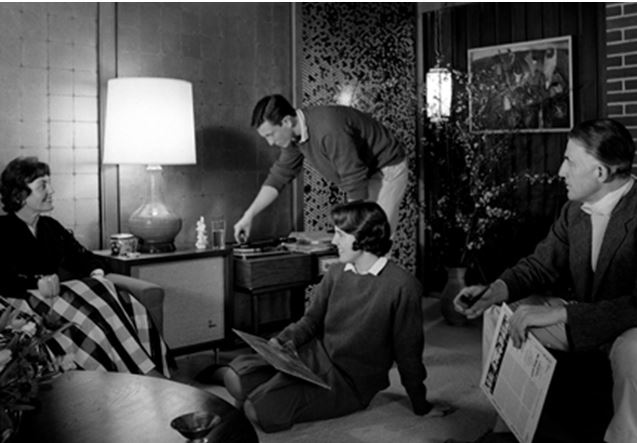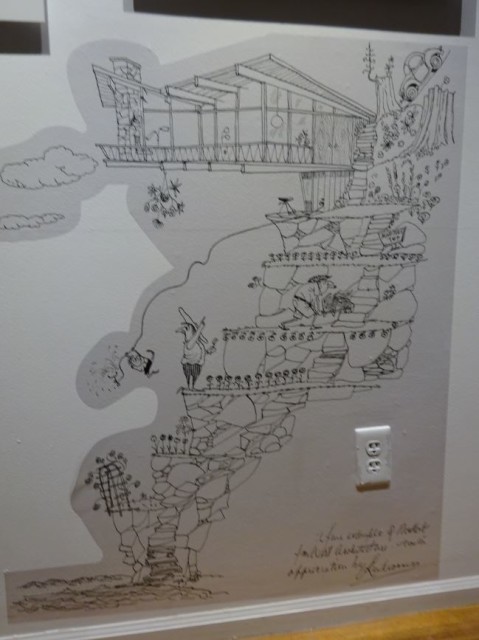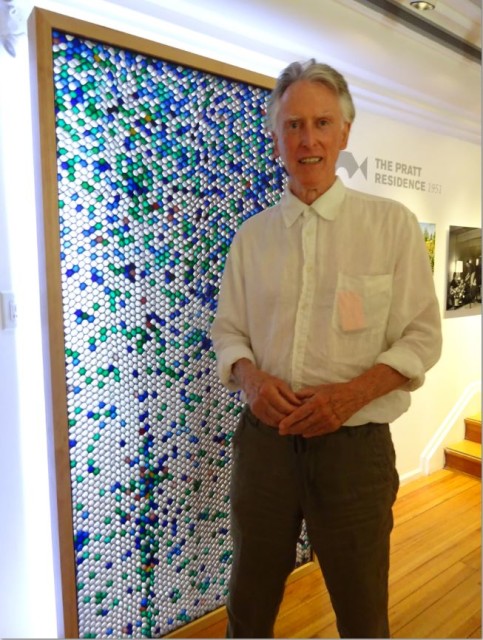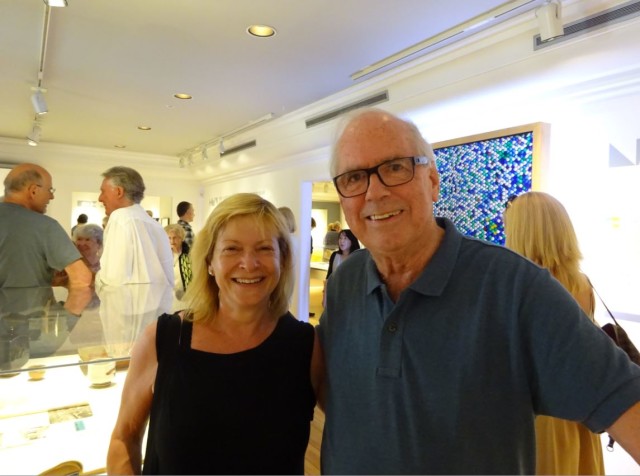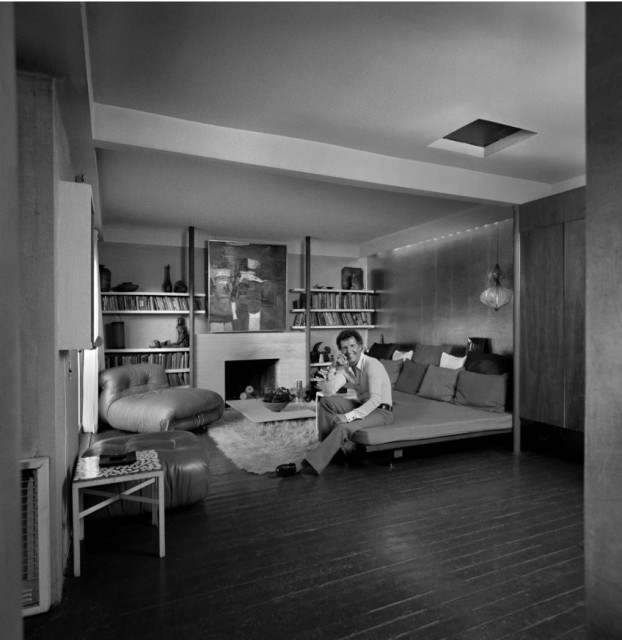It was common in the 1970s to get in an elevator with an operator at buildings such as Woodwards and the Bay. Where did they go?

By Angus McIntyre
“Going up, she said,” is the opening line in the 1970’s pop song Heaven on the 7th Floor about a tryst between a female elevator operator and a male passenger. At that time, you could ride on some 40 elevators in Vancouver that were operated by men and women. Vancouver City Hall, the Hotel Vancouver and all the department stores had elevator operators in the early 1970s. Most large American cities had already automated most of their lifts, but Vancouver did not start in earnest until later.

The History:
My interest in both horizontal and vertical movement of people started at an early age, and I was always fascinated with electric streetcars and trolleybuses. We lived in Windsor, Ontario, in the 1950s, and visits to Hudson’s, Detroit’s huge department store, were always a treat. There were dozens of elevators, all run by uniformed staff with white gloves, with a senior operator known as a “Starter” to keep things moving. In 1958 our family moved to Geelong, a city near Melbourne, Australia. One of the department stores had a manual elevator, and I became friends with the operator. I was in grade 7, and would sometimes visit after school. She showed me the mechanics of the lift, and how it all worked.
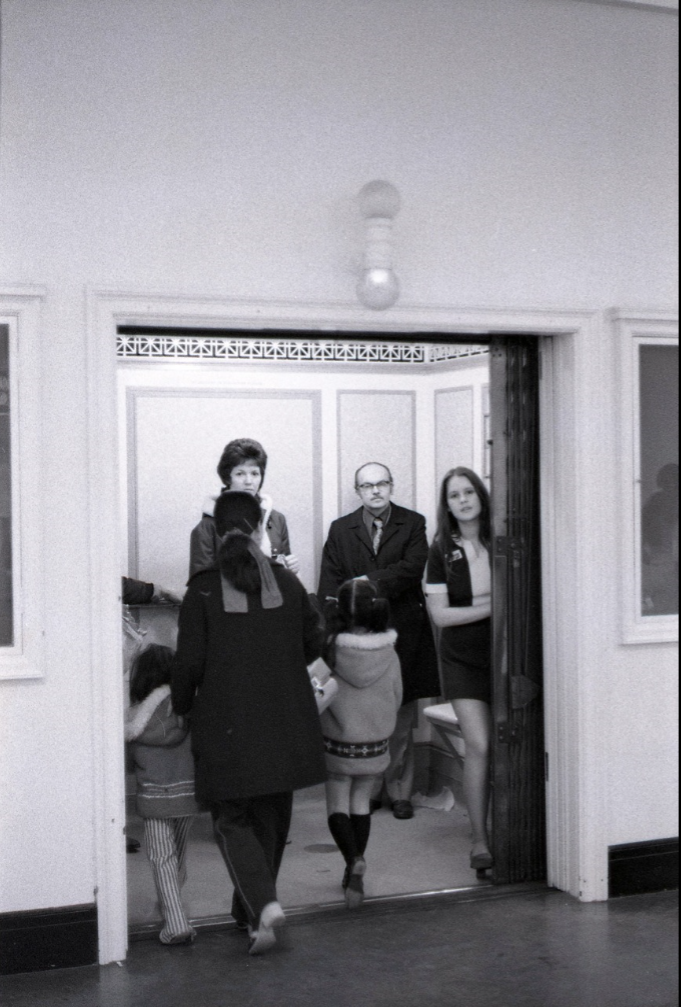
Elevator operators of Vancouver:
Our family moved to Vancouver in 1965, and soon I found many buildings with elevator operators. Woodward’s on Hastings Street had a set of manual elevators in the centre of the store. The Starter stood at an information booth on the main concourse near the lifts, and she had a set of castanets. When she saw that a car was full, she would signal the operator with a “clack-clack”, the gate would slide across and the doors would close. The sound could be heard above the busiest crowds on $1.49 Day. Since there were windows in the doors, you could see all the people inside as the car ascended.

The old B.C. Electric Building on Carrall Street had elevators that ran on 600 volts Direct Current, sourced from the trolleybus system. About a dozen downtown buildings were wired into the trolley system, so if there were a trolley power failure people would be stuck in the elevators. The last building to use such power was the Sylvia Hotel, converted in the 1980s.
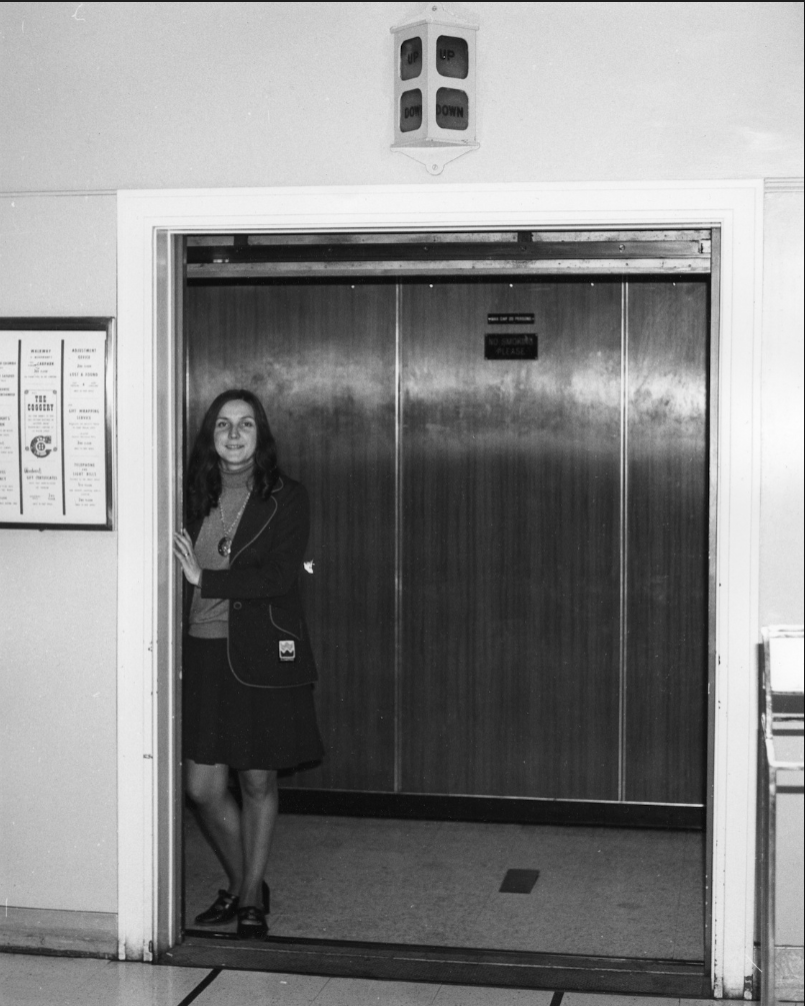
There may be a few isolated manual elevators in Vancouver now, most likely for freight rather than people. New high-rise buildings often have the exterior construction elevator manually operated. A large downtown bank still requires an operator to take you to the safety deposit vault.
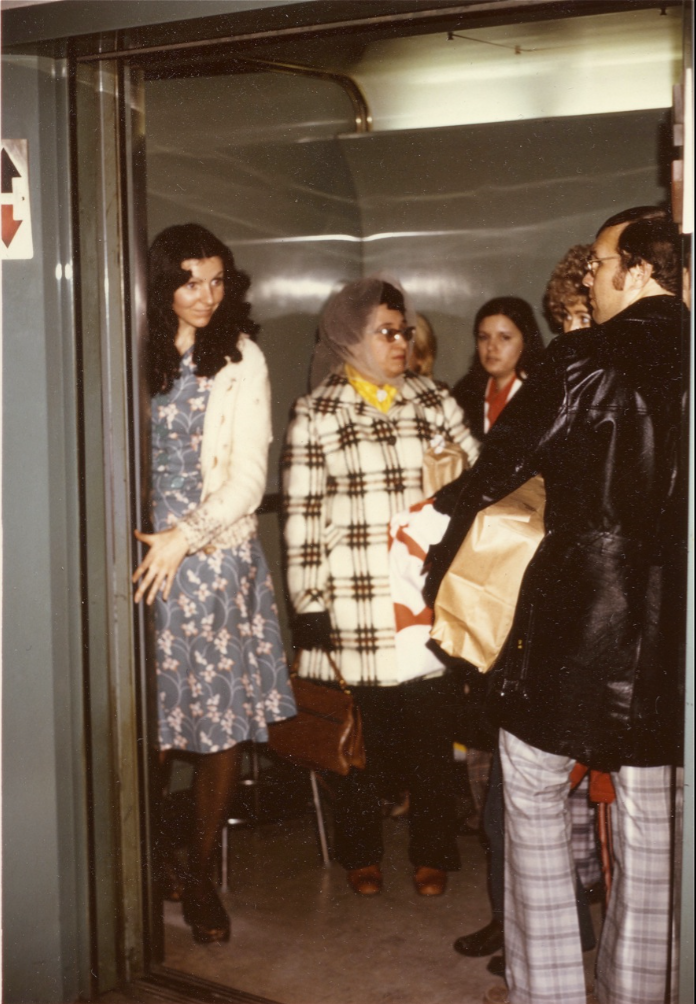
If you want to see a large building with elevator operators today, you can visit Seattle’s iconic Smith Tower.
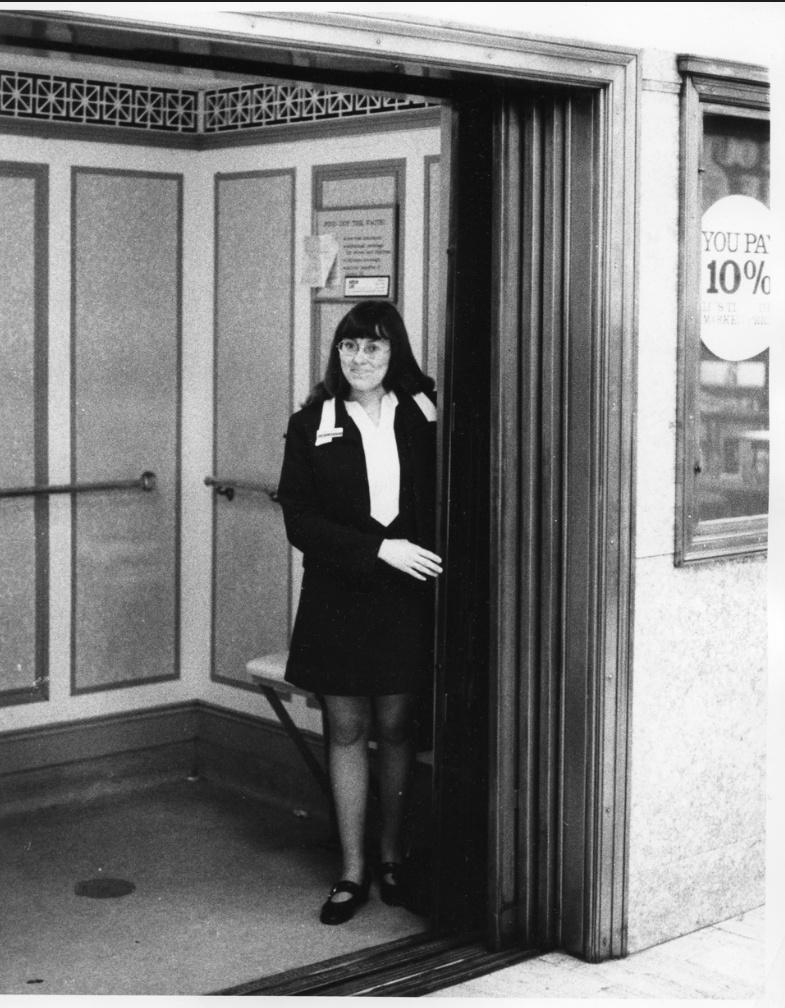
© All rights reserved. Unless otherwise indicated, all blog content copyright Eve Lazarus.


